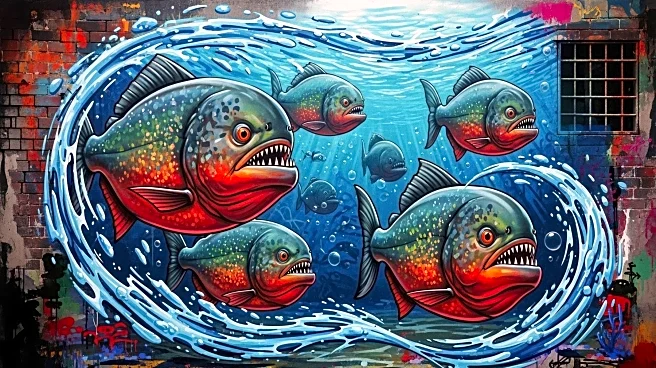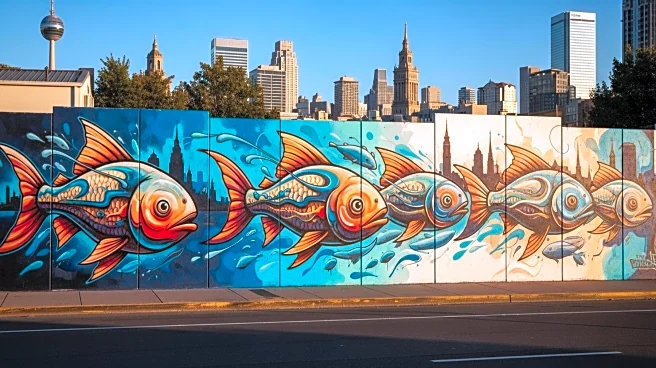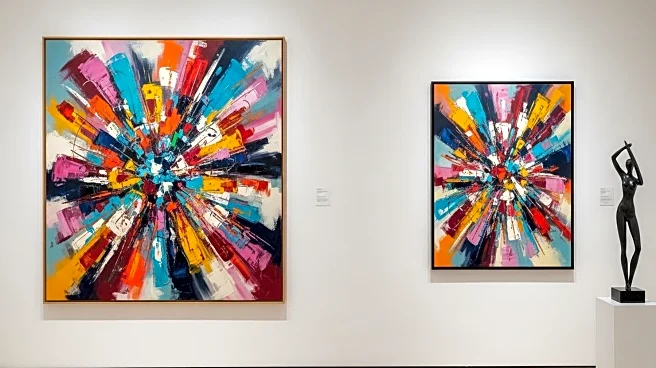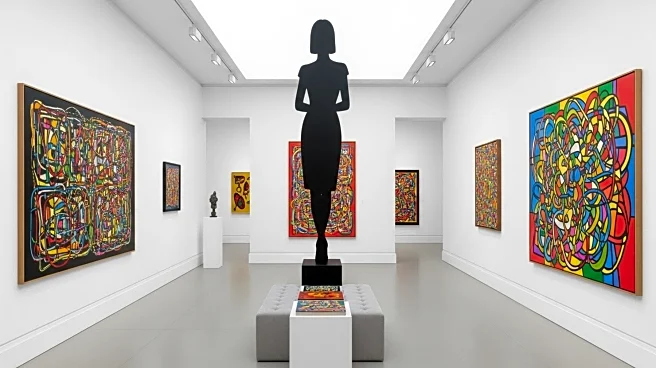What's Happening?
Banksy's artwork, featuring a fish tank full of piranhas, is set to be displayed at the London Museum's new Smithfield location in 2026. The piece, originally installed on a police sentry box in London's financial district, was part of a series of animal-themed interventions by Banksy in August 2024. The City of London Corporation initially removed the booth and displayed it at Guildhall Yard before placing it in storage. The museum's relocation project, costing $280 million, aims to attract two million visitors annually. The collection will include works ranging from Roman graffiti to contemporary pieces like Banksy's.
Why It's Important?
The acquisition of Banksy's Piranhas by the London Museum highlights the growing recognition of street art as a significant cultural and artistic movement. Banksy's work often challenges societal norms and provokes thought on issues such as surveillance and policing, as suggested by critics. The inclusion of such pieces in a major museum's collection underscores the importance of contemporary art in reflecting and shaping public discourse. This move may influence other institutions to consider street art as a valuable part of their collections, potentially increasing its visibility and appreciation among broader audiences.
What's Next?
The London Museum's relocation and the upcoming exhibit featuring Banksy's Piranhas are expected to draw significant public interest. As the museum prepares for its opening in 2026, it will likely engage in promotional activities to highlight its new acquisitions and attract visitors. The exhibit may spark discussions on the role of street art in modern society and its impact on cultural institutions. Additionally, the museum's relocation project could serve as a model for other institutions seeking to expand their reach and enhance their collections.
Beyond the Headlines
Banksy's Piranhas, with its layered allusions to surveillance and policing, invites deeper reflection on the ethical and societal implications of such themes. The artwork's transformation of a police sentry box into a fish tank with piranhas may symbolize the perceived dangers of unchecked surveillance. This piece, along with others in the series, encourages viewers to question the balance between security and privacy in contemporary society. The museum's decision to include such provocative works in its collection may inspire further dialogue on these critical issues.












